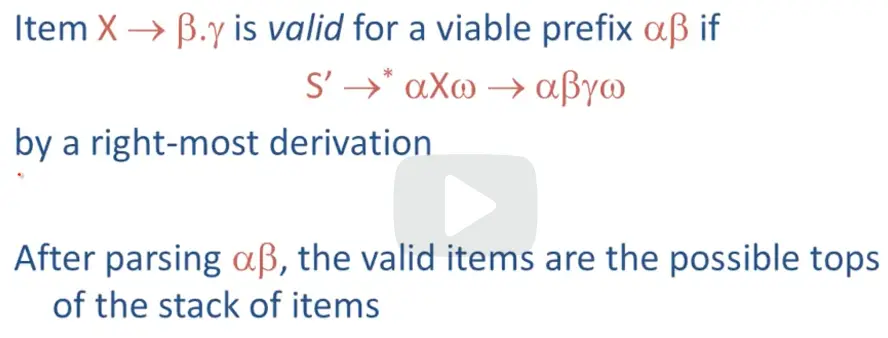- Preferred method
- A bottom-up parser traces a rightmost derivation in reverse. Reduces a string to the start symbol by inverting productions
- Do not require Left refactor.
- For any grammar, the set of viable prefixes is a regular language
Shift Reduce Parsing
- Split the string into 2 substring.
- Left: Non-Terminals and Terminals
- Right: Terminals
- Shift:
- move a terminal to the left string
- Apply an inverse production at the right end of the left string
- Push a terminal to the stack, top of the stack is the
|
- Reduce
- pops symbols off of the stack (production rhs)
- pushes a non-terminal on the stack (production Ihs)
Conflict
- If it is legal to both shift or reduce, there is a shift-reduce conflict
- Recoverable
- If it is legal to reduce by two different productions, there is a reduce-reduce conflict
- Grammar error.
Handle
- We only want a reduction at handles
- A handle is a reduction that also allows further reductions back to the start symbol
- handles appear only at the top of the stack, never inside
- Bottom-up parsing algorithms are based on recognising handles
Viable Prefix
Used to recognise handle, guide the right direction of reduce
- Recognising VP
- Add a dummy production to
- The NFA States are the items of G
- We either extend (follow) or epsilon transaction (with production)
- Every state is an accepting state
- The states of the DFA are “canonical collections of LR(0) items”
Valid Item
definition:

LR Parser
- action table
Action[s, a]shift: push to stackreduce: pop the rhs off the stacks,Gototable gives a new state to push on the stack. The input is unchangedaccepterror
- goto table
Goto[s, X]the action table specifying entries for terminals, and the goto table specifying entries for nonterminals.